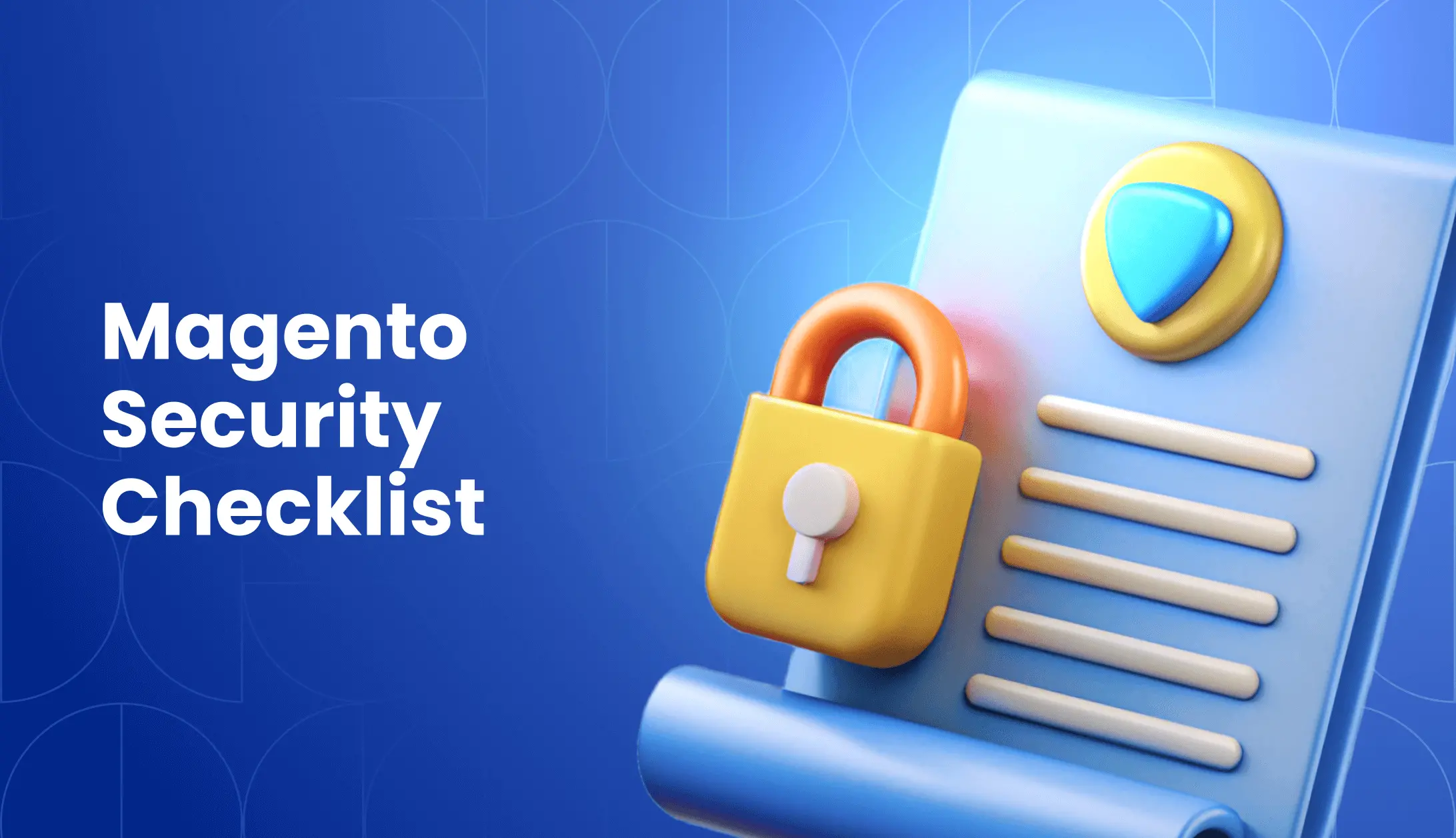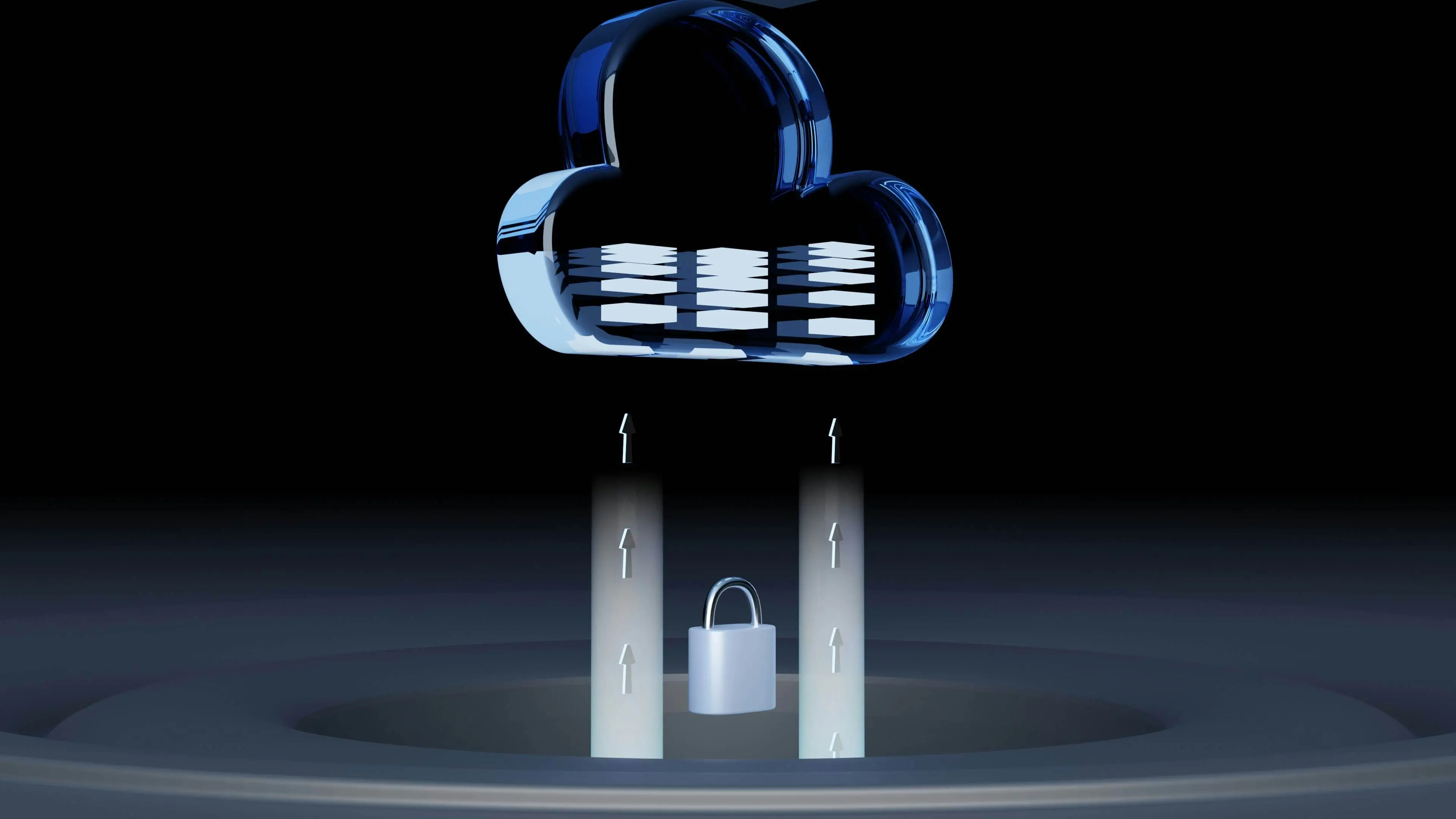0%

Over 250,000 merchants rely on Magento, a fact that cybercriminals exploit through targeted attacks on vulnerable stores.
A single breach brings devastating data loss, fines, and lost customer trust. Too many store owners are unaware that simple oversights, like an outdated extension, create an open door for attackers. A consistent, professional Magento website maintenance routine is your best defense against these evolving threats.
This article details a clear, actionable plan to protect your revenue and reputation with a hardened security posture.
Magento 2 Security: What It Is and Why It Matters
Magento security refers to the comprehensive set of practices, tools, and protocols implemented to protect your e-commerce store from unauthorized access, data theft, and malicious attacks. It's not a single feature but an ongoing process that encompasses everything from the core software and server configuration to every extension and user account.

The importance of a robust Magento security strategy cannot be overstated. A secure store is fundamental to your business's survival for three critical reasons:
- Protects Revenue and Prevents Financial Loss – A successful attack can halt sales, lead to fraudulent transactions, and incur massive fines for non-compliance with regulations like PCI DSS and GDPR.
- Safeguards Customer Trust and Reputation – Your store holds sensitive customer data, including names, addresses, and payment information. A breach shatters the trust you've built and can cause irreversible reputational damage.
- Ensures Business Continuity and Stability – Attacks like ransomware can take your entire store offline. Strong security measures ensure uptime, stability, and a seamless shopping experience, which are essential for growth.
6 Core Magento Security Best Practices
Before exploring complex security tools, ensure your organization has mastered these core best practices. This section provides a foundational guide on how to secure your store's most critical areas.
1. Enforce Multi-Factor Authentication (MFA)
Require a second form of verification beyond just a password for accessing all critical systems, including email, cloud services, and network infrastructure. MFA is one of the most effective controls for preventing account takeovers, as it neutralizes the threat of stolen or weak passwords by requiring a unique, time-sensitive code or biometric factor.
2. Implement a Strong Password Policy
Mandate the use of long, complex passwords or passphrases and consider implementing a password manager. While MFA is your primary defense, strong, unique passwords for each service remain a necessary foundation, creating a layered defense that protects your accounts even if one factor is compromised.
3. Adopt the Principle of Least Privilege
Grant users, applications, and systems only the permissions and access absolutely necessary to perform their specific tasks. This limits the "blast radius" of a potential breach, ensuring that if one account is compromised, the attacker cannot easily move laterally to access sensitive data or critical systems.
4. Keep Systems and Software Updated
Promptly apply security patches for all operating systems, applications, and firmware. For the most comprehensive protection, a full Magento upgrade to a supported version is often necessary, as patches are not released for end-of-life versions. Cybercriminals often exploit known vulnerabilities that have already been patched; a rigorous and timely patch management process is one of the most effective defenses against these common attacks.
5. Conduct Regular Employee Security Training
Your employees are your first line of defense. Provide ongoing training to help them recognize phishing attempts, social engineering, and other threats. A security-aware culture is critical for mitigating human error, which is a leading cause of security incidents.
6. Maintain Secure and Verified Backups
Regularly back up critical data using a method that protects it from ransomware (e.g., the 3-2-1 rule). Crucially, you must regularly test your backups by performing restoration drills to ensure your data can be recovered quickly and completely after an incident.
Advanced Magento Security Measures
While core best practices form your primary defense, protecting against sophisticated threats requires a more proactive and layered strategy. The following advanced measures are designed to enhance your visibility, resilience, and ability to respond to targeted attacks.
Implement Zero-Trust Architecture
Move beyond the traditional "trust but verify" model by adopting a Zero-Trust framework, which operates on the principle of "never trust, always verify." This means explicitly verifying every user, device, and application attempting to connect to resources, regardless of whether they are inside or outside the corporate network, thereby significantly reducing the attack surface.
Deploy Endpoint Detection and Response (EDR)
Go beyond traditional antivirus software with EDR solutions. These tools continuously monitor and collect endpoint data, use advanced analytics to detect suspicious activities, and provide capabilities for security teams to investigate and actively respond to threats in real-time, turning endpoints from vulnerabilities into a source of security intelligence.
Conduct Regular Penetration Testing and Red Teaming
Proactively identify vulnerabilities in your systems, processes, and people by engaging in authorized, simulated cyberattacks. While penetration testing focuses on finding technical flaws, red teaming conducts broader, objective-based exercises to test your organization's overall detection and response capabilities against a determined adversary.
Utilize a Security Information and Event Management (SIEM) System
Centralize the collection, aggregation, and analysis of security data from across your entire IT environment. A SIEM system provides real-time analysis of security alerts, helps correlate disparate events to identify complex attack patterns, and is essential for effective threat hunting and meeting compliance requirements.
Enforce Micro-Segmentation
Divide your network into secure, isolated zones to control east-west traffic and contain potential breaches. Particularly critical in cloud and data center environments, micro-segmentation prevents an attacker who compromises one server from easily moving laterally to others, effectively creating digital "firebreaks" within your network.
Integrate Threat Intelligence Feeds
Incorporate curated external data about emerging threats, threat actor tactics, and indicators of compromise (IOCs) into your security systems. This contextual awareness allows you to move from a reactive to a proactive posture, tuning your defenses to recognize and block the latest known attack methods before they can impact your organization.
Custom Adobe Commerce Security Configurations
While standardized settings provide a baseline, the scale and flexibility of Adobe Commerce often demand tailored security configurations to address specific risks, compliance mandates, and unique architectural designs, especially in cloud environments. The following strategies go beyond out-of-the-box settings.
| Configuration Approach | Primary Goal | Adobe Commerce Specific Action |
| Hardened Baselines | Minimize attack surface by removing or disabling non-essential functions. | Disable unused Magento modules via bin/magento module:disable, remove the /pub/ directory's sample files, and disable unnecessary services in the Admin Panel. |
| Role-Based Access Controls (RBAC) | Enforce the principle of least privilege by tailoring permissions to specific user roles. | Leverage the built-in Magento RBAC system to create scoped admin roles with permissions only for specific features (e.g., "Catalog Manager," "Order Processor"). |
| Application Allowlisting | Prevent unauthorized software from executing by only allowing pre-approved applications. | Implement a server-level solution (e.g., SELinux, AppArmor) to restrict process execution, as this is not a native Magento feature. |
| Custom Encryption & Key Management | Protect sensitive data with proprietary or specialized encryption algorithms and key lifecycles. | Use Magento's built-in encryption for sensitive database fields and integrate with an external Key Management Service (KMS) via a custom module for enhanced secret storage. |
Common Magento Security Issues
Magento's complex architecture and heavy reliance on extensions create unique safety challenges that require specific attention beyond standard web practices. Use this table as a quick-reference checklist for common vulnerabilities.
| Issue | Risk | Immediate Action |
| Malicious Extensions | Backdoors, data theft | Audit extensions quarterly; remove unused ones |
| Admin Account Compromise | Full site takeover | Enforce 2FA and rename the admin path |
| File Upload Bypasses | Remote code execution | Validate file types; store uploads outside web root |
| Data Exposure | Compliance fines, reputation loss | Encrypt the core_config_data table |
| File System Weaknesses | Code injection, defacement | Set correct ownership (e.g., 644 for files, 755 for dirs) |
| Outdated Versions/Patches | Exploitation of known vulnerabilities | Apply security patches within 48 hours of release |
| Insecure Direct Object References | Unauthorized data access | Audit custom code for proper authorization checks |
Securing a Magento store requires continuous vigilance, not just a one-time setup. By integrating these specific measures with your core security protocols, you build a layered defense that safeguards your business and customer trust.
Creating an Incident Response Plan
Despite your best efforts in prevention, a prepared merchant plans for the worst. A clear Incident Response (IR) Plan ensures that if a security breach occurs, your team can contain the damage, eradicate the threat, and recover operations swiftly, minimizing both downtime and reputational harm.
1. Preparation: Assemble Your Team and Tools
Before an incident occurs, designate a response team with clear roles (e.g., Lead, Tech, Communications). Ensure they have the necessary tools, including contact lists, secure communication channels, and access to forensic tools.
2. Detection & Analysis: Identify the Scope
The moment an anomaly is detected, whether via a SIEM alert, customer report, or suspicious admin activity, the analysis phase begins. The goal is to determine the entry point, what data was accessed, and whether the attacker still has a presence in the system.
3. Containment, Eradication & Recovery: Take Back Control
Short-term Containment – Immediately isolate the compromised system (e.g., take it offline or block network access) to prevent the attack from spreading.
Eradication – Identify and remove all components of the attack, such as malicious files, backdoors, and compromised user accounts. This often requires a full security audit.
Recovery – Restore the Magento store from a known-clean, verified backup. This is where your rigorous backup strategy proves its worth. Before going live, ensure all patches are applied and vulnerabilities are fixed.
4. Post-Incident Activity: Learn and Improve
Conduct a thorough post-mortem analysis. Document what happened, how it was resolved, what the cost was, and how similar incidents can be prevented in the future. Use these lessons to update your IR plan and strengthen your security posture.
Key Takeaways
Implementing these security best practices is your most effective defense against data breaches, financial loss, and reputational damage. A proactive approach transforms your Magento store from a target into a trusted, secure fortress for your customers. Here is a final tip: consistently review and update your security checklist to adapt to new threats.
Need expert help to implement these steps and proactively manage your store's security? The Transform Agency team specializes in Magento maintenance and protection. Reach out today for a free security assessment and let us handle your Magento security, so you can focus on growing your business.
FAQ
How do I secure my Magento site?
To secure your Magento site, implement multi-factor authentication, enforce strong password policies, regularly update systems and software, adopt the principle of least privilege, and conduct regular security training for employees. Additionally, perform regular security audits and use firewalls, intrusion detection systems, and web application firewalls for comprehensive protection.
Is Magento secure?
Magento is secure when properly configured and maintained. Its safety depends on regular updates, use of trusted extensions, and adherence to best practices in cybersecurity. Magento provides robust security features, but it's crucial to actively manage and monitor your security posture.
Which security platforms are ideal for Magento sites?
Ideal security platforms for Magento sites include advanced endpoint protection, security information and event management (SIEM) systems, web application firewalls (WAF), and intrusion detection systems (IDS). Platforms like Cloudflare, Sucuri, and Palo Alto Networks can offer additional protection.
How do I install security patches in Magento?
To install security patches in Magento, download the patches from the Magento official website. Use either the SSH command line or a web-based interface to apply the patches. Ensure you back up your site before applying any patches to prevent data loss in case of issues.
Alex excels in creating and approving customization architecture, ensuring robust and efficient solutions for e-commerce platforms. His expertise in Magento allows him to effectively manage tech resources and drive technical projects to successful completion.
Alex excels in creating and approving customization architecture, ensuring robust and efficient solutions for e-commerce platforms. His expertise in Magento allows him to effectively manage tech resources and drive technical projects to successful completion.



